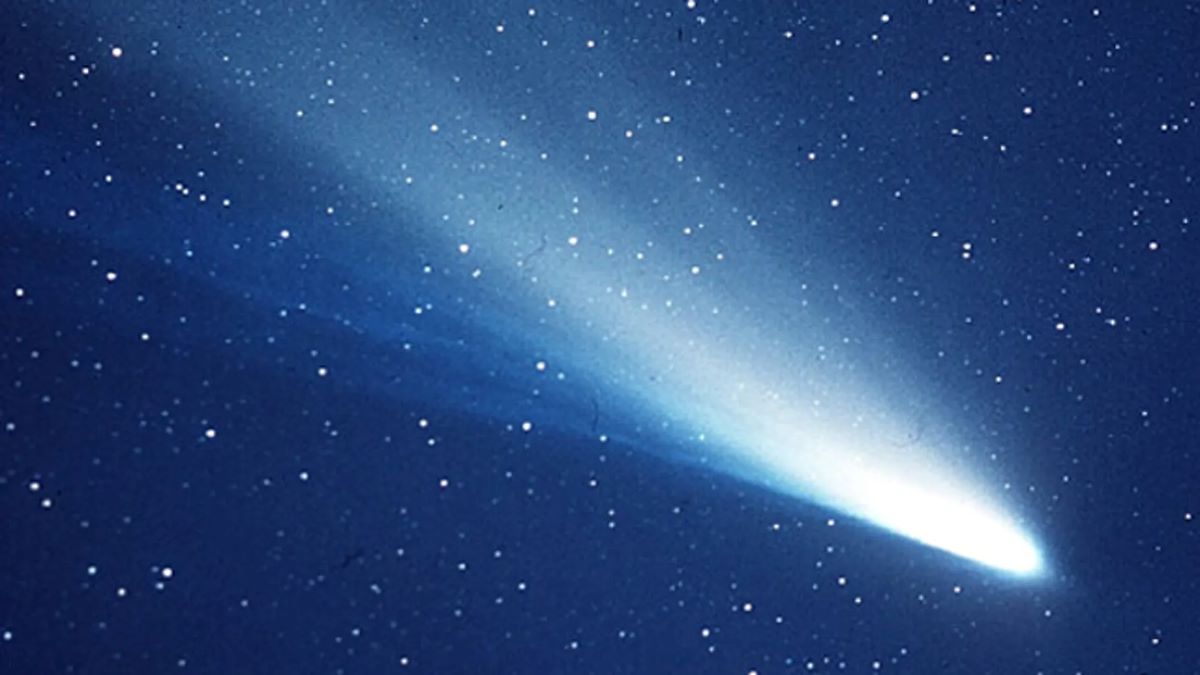After 38 years of absence, Halley’s Comet finally begins to return
2023-12-14

When we talk about comets, we all think of Halley's Comet. It is indeed the most famous comet. It comes near the earth every 76 years and looks very bright every time, so it has received unique attention.
This comet bid farewell to the earth in 1986 and has been away from us for 38 years. At this moment, it is 5.23 billion kilometers away, but it has stopped its voyage and wants to bid farewell to the vast deep space of the universe and move towards the bright inner solar system. Marched on.
After 38 years of absence, Halley's Comet finally looks back. At 9:00 a.m. on December 9 this year, Halley's Comet reached its final destination after moving away from the sun - aphelion. Then it began its journey back to the center of the solar system. The pace will be accelerated step by step, and it will fly towards the sun. It will begin its return journey of 5.23 billion kilometers (further based on the elliptical orbit) until it meets us 38 years later in 2061. Its perihelion will be July 28 of that year.
Halley's Comet is a "frequent visitor" in Chinese ancient astronomical records. After research, Chinese astronomer Zhu Wenxin believes that from 240 BC to 1910, its return activities were recorded 29 times in Chinese history books, which lasted for 2150 years. , consistent with the time span of its 29 returns, which means that every one of its returns is basically recorded.
But the comet's current name belongs to a British astronomer named Edmond Halley. He calculated the comet's orbit and period in 1750, and predicted its next return time. This was at that time It caused a great sensation in the astronomical community, and since then people have realized that the movement of comets is cyclical.
Later, astronomers called comets with a period longer than 200 years as long-period comets, and comets with a period less than 200 years as short-period comets. Halley's Comet has an orbiting period of about 76 years, so it is a short-period comet.
The nucleus of Halley's Comet is a small celestial body with a diameter of about 10 kilometers and a mass of about 300 billion tons. In fact, most comets are dirty snowballs, composed of water, cosmic dust and gravel.
Whenever it comes near perihelion, the surface of the comet will evaporate water vapor, eject sand, dust, water vapor, or even break up due to sunlight and its own activities. At this time, a long comet tail will appear. looks like a big broom, so ancient Chinese people often called comets "broom stars".
Comets are considered to be the most primitive celestial bodies in the solar system and contain information about the early solar system. Therefore, the study of comets can explore scientific mysteries such as the early conditions of the solar system and the formation and evolution of the solar system.
Halley's Comet also brought the famous Orionid meteor shower to the earth. In October and November every year, the meteors that appear between the radiant points in the constellations of Orion, Gemini and Taurus basically belong to this meteor shower.
Halley's Comet reached perihelion around the sun on February 9, 1986. Now, 38 years later, Halley's Comet has begun to return and will meet us in July 2061. By then it will shine in the night sky again, probably brighter than Venus. Be bright.


